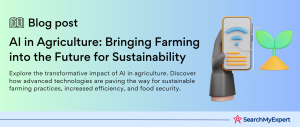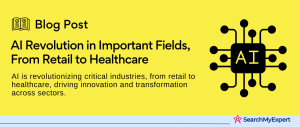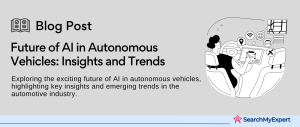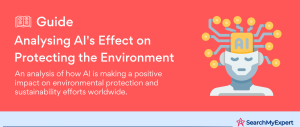Defining AI and Big Data: The Pillars of Modern Technology
In today’s fast-paced digital world, two buzzwords frequently dominate tech discussions: Artificial Intelligence (AI) and Big Data. Both have become crucial components in shaping the future of technology, business, and society. But what exactly do these terms mean, and how do they function individually and in tandem? This comprehensive look delves into the essence of AI and Big Data, unraveling their functionalities and the significance of their intersection.
Artificial Intelligence (AI): A Brief Overview
Artificial Intelligence, at its core, refers to the simulation of human intelligence processes by machines, especially computer systems. This technology encompasses several aspects, including:
- Learning Processes:
This involves acquiring information and the rules for using the information. - Reasoning Processes:
Applying rules to reach approximate or definite conclusions. - Self-correction:
Enhancements in algorithms and mechanisms to improve over time.
Key areas of AI include machine learning, where computers are trained to learn from and interpret data, and natural language processing, which is the ability of computers to understand human language. AI is employed in various applications ranging from the simple (like virtual assistants on smartphones) to the complex (such as predictive algorithms in autonomous vehicles).
Big Data: Understanding the Basics
Big Data refers to extremely large data sets that may be analyzed computationally to reveal patterns, trends, and associations, especially relating to human behavior and interactions. The main characteristics of Big Data, often known as the three Vs, are:
- Volume:
The quantity of generated and stored data. - Velocity:
The speed at which new data is generated and the speed at which data moves around. - Variety:
The different types of data (text, images, voice, etc.).
Big Data can be structured, unstructured, or semi-structured, presenting challenges in its processing and analysis. However, the insights gained from Big Data analysis are invaluable in various domains like healthcare, finance, and marketing.
The Intersection of AI and Big Data: A Synergistic Relationship
The real power emerges when AI and Big Data work together. AI provides the tools and methodologies to process and analyze Big Data efficiently. In contrast, Big Data offers the vast information needed for AI algorithms to learn effectively. This synergy leads to numerous possibilities and advancements:
- Enhanced Machine Learning:
Big Data feeds AI systems with the necessary data for deep learning, leading to more accurate predictions and decisions. - Improved Decision Making:
AI algorithms can analyze large volumes of data, leading to more informed decisions in business and other sectors. - Innovation in Various Fields:
From healthcare, where AI and Big Data can predict disease outbreaks, to customer service, where they can enhance customer experiences, the combined force of these technologies is boundless.
The intersection of AI and Big Data is not without challenges, such as data privacy concerns and the need for sophisticated data processing capabilities. However, the potential benefits and advancements they offer are significant, making their combined use a pivotal aspect of modern technology.
Big Data in Action: Harnessing the Power of Immense Data Volumes
In the realm of Big Data, the journey from raw data to actionable insights is a complex process, involving several crucial steps. Understanding these steps is key to leveraging Big Data’s full potential. This detailed exploration focuses on the intricacies of data acquisition and generation, the challenges of data storage and management, and the critical role of data preprocessing and cleaning.
Data Acquisition and Generation: The Starting Point
The first step in the Big Data lifecycle is acquiring and generating data. This process can be as varied as the data itself, encompassing numerous sources and methods:
- Automated Data Collection:
This involves using tools and technologies to automatically collect data, such as sensors in IoT devices or clickstream data from websites. - Manual Data Entry: In some cases, data is manually entered into systems, a method often used in fields like healthcare.
- Public Data Sources: Governments and organizations often release data sets that can be a valuable source of information.
- Social Media and Online Platforms:
These are goldmines for Big Data, offering insights into consumer behavior and preferences. - Transactional Data:
This includes records of financial transactions, purchases, and interactions, crucial for businesses.
The diversity of data sources ensures a comprehensive dataset, which is essential for nuanced insights and analyses.
Data Storage and Management: Tackling the Volume Challenge
Once acquired, the sheer volume of Big Data presents significant storage and management challenges:
- Storage Solutions: The traditional database systems are often inadequate for Big Data. Solutions like NoSQL databases, cloud storage, and Hadoop clusters are more suited to handle the volume and variety of Big Data.
- Data Lakes and Warehouses: Data lakes store raw data in its native format, whereas data warehouses store processed and structured data. Choosing the right approach depends on the use case and data types.
- Data Governance:
Ensuring data quality, security, and compliance is paramount, especially with the increasing concerns around data privacy and regulations like GDPR.
Effective data storage and management are foundational for the subsequent stages of the Big Data lifecycle, impacting everything from data accessibility to analysis.
Data Preprocessing and Cleaning: Preparing Data for AI Analysis
Before data can be analyzed, it must be preprocessed and cleaned, a step that significantly impacts the quality of insights derived:
- Data Cleaning:
This involves correcting or removing inaccurate, corrupted, incorrectly formatted, duplicate, or incomplete data within a dataset. - Data Transformation: Data may need to be transformed or normalized to ensure consistency in analysis.
- Data Reduction: Reducing the data volume without losing its integrity can streamline analysis processes.
- Dealing with Missing Values: Identifying and addressing missing data is crucial for maintaining the accuracy of analyses.
AI Techniques for Big Data: Unleashing Advanced Analytical Power
In the intersection of AI and Big Data, sophisticated techniques are employed to extract meaningful insights from vast and complex data sets. This segment delves into the pivotal AI methodologies such as Machine Learning, Deep Learning, and Natural Language Processing (NLP), highlighting how they revolutionize data analysis.
Machine Learning: The Core of Data Analysis
Machine Learning (ML), a subset of AI, involves the use of algorithms that enable computers to learn from and make predictions or decisions based on data. In the context of Big Data, several ML algorithms are prominently used:
- Supervised Learning:
These algorithms learn from labeled training data, helping predict outcomes for unforeseen data. Examples include linear regression for continuous outputs and classification trees for categorical outputs. - Unsupervised Learning:
These algorithms identify patterns or groupings in data without the need for labeling. Clustering and association are common techniques used here. - Reinforcement Learning: This involves algorithms that learn optimal actions through trial and error to achieve a specific goal. It’s widely used in areas like robotics and gaming.
Each of these algorithms plays a critical role in analyzing and interpreting the vast amounts of data generated in today’s digital world.
Deep Learning: A Step Further in Complexity
Deep Learning, a subset of ML, utilizes neural networks with multiple layers (hence the term “deep”) to process data. Its capabilities are particularly significant in handling complex data:
- Structure of Deep Learning:
It involves neural networks with multiple layers. Each layer uses a set of algorithms to progressively extract higher-level features from the raw input. - Effectiveness in Big Data: Deep Learning is particularly adept at handling unstructured data like images, sound, and text. It’s used in applications like image recognition, speech recognition, and language translation.
- The advantage over Traditional ML: Deep Learning can automatically detect and learn correlations between different pieces of data, making it more effective for large datasets where manual feature extraction is impractical.
Natural Language Processing (NLP): Understanding Human Language
NLP, a field at the intersection of AI and linguistics, involves the ability of a computer program to understand, interpret, and generate human language. In the context of Big Data, NLP has several important applications:
- Text Analysis:
NLP algorithms are used to analyze large volumes of text data, extracting meaningful patterns and insights. - Sentiment Analysis:
By analyzing text data from sources like social media, NLP can determine public sentiment towards products, services, or events. - Language Translation:
NLP is used in real-time language translation services, significantly aiding in cross-language data analysis.
Applications of AI & Big Data: Transforming Industries and Experiences
The convergence of AI and Big Data has led to groundbreaking applications across various sectors. These technologies are not just reshaping business strategies but also personalizing user experiences and accelerating scientific research. This exploration highlights the profound impact of AI and Big Data in Business Intelligence, Personalization, and Scientific Innovation.
Business Intelligence and Analytics: Making Smarter Decisions
In the business world, AI and Big Data are revolutionizing the way companies operate, providing deeper insights and predictive analytics:
- Predictive Analytics:
By analyzing historical data, AI algorithms can predict future trends, helping businesses in areas like demand forecasting and risk management. - Customer Insights:
AI-driven analysis of Big Data provides detailed customer behavior insights, enabling businesses to tailor their strategies accordingly. - Operational Efficiency: AI algorithms can optimize business operations, reducing costs and improving efficiency. For example, supply chain optimization using Big Data analytics.
The integration of AI and Big Data in business intelligence empowers companies to make informed decisions, stay competitive, and adapt to changing market dynamics.
Personalized Experiences: Tailoring to Individual Preferences
AI and Big Data have significantly enhanced the ability to offer personalized experiences in various domains:
- Customized Recommendations: E-commerce and streaming services use AI algorithms to analyze user data and provide personalized product or content recommendations.
- Targeted Marketing:
By analyzing customer data, businesses can create targeted marketing campaigns, improving engagement and conversion rates. - Personalized Healthcare:
In healthcare, AI and Big Data enable personalized treatment plans based on a patient’s unique health data, improving treatment outcomes.
These customized experiences not only enhance customer satisfaction but also build brand loyalty and trust.
Scientific Research and Innovation: Paving the Way for Breakthroughs
AI and Big Data are also pivotal in advancing scientific research and technological development:
- Accelerating Drug Discovery:
AI algorithms can analyze vast datasets to identify potential drug candidates, significantly speeding up the drug discovery process. - Climate Change Analysis:
Big Data analytics are used in climate modeling and analysis, helping scientists understand and predict climate change impacts. - Astronomical Research:
In astronomy, AI and Big Data are used to process and analyze the vast amounts of data collected by telescopes, aiding in discoveries about the universe.
These applications of AI and Big Data in scientific research are not only expediting innovation but also helping solve some of the most complex and pressing challenges of our time.
Challenges and Ethics in AI & Big Data: Navigating the Complex Landscape
The integration of AI and Big Data into various facets of society and industry brings with it a set of challenges and ethical considerations. These concerns, ranging from privacy and data security to algorithmic bias and workforce dynamics, are crucial for ensuring responsible and equitable use of these technologies. This examination provides an insight into these vital issues.
Privacy Concerns and Data Security: Protecting Personal Information
In an era where data is often referred to as the new oil, safeguarding this precious resource is paramount:
- Data Privacy: With vast amounts of personal data being collected, concerns over privacy infringement have intensified. Ensuring data is used ethically and protecting sensitive information from unauthorized access is a significant challenge.
- Security Risks: The risk of data breaches and cyber attacks looms large, potentially leading to misuse of sensitive data. Robust security measures and frameworks are essential to protect data integrity.
Addressing these issues requires stringent data protection laws, ethical data collection practices, and advanced security protocols to prevent misuse and maintain public trust.
Algorithmic Bias and Fairness: Striving for Equitable AI
The potential for bias in AI algorithms is a significant concern, as these biases can perpetuate and even amplify existing societal inequalities:
- Source of Bias:
Bias in AI can stem from biased training data, flawed algorithm design, or the subjective nature of the data interpretation. - Ensuring Fairness:
It’s crucial to develop AI systems that are transparent and fair. Regular audits, diverse data sets, and inclusive design practices can help mitigate biases.
Implementing these measures ensures AI systems are not just efficient but also equitable and fair to all sections of society.
Job Displacement and Human-AI Collaboration: Balancing the Equation
As AI continues to automate tasks traditionally performed by humans, concerns about job displacement have emerged:
- Impact on Workforce: Automation can lead to the displacement of certain job categories, particularly those involving repetitive tasks.
- The Need for Reskilling: To address this, there’s a growing need for reskilling and upskilling programs to prepare the workforce for more AI-augmented roles.
- Human-AI Collaboration:
The future workplace is envisioned as a collaborative space where human creativity and AI efficiency coexist and complement each other
The Future of AI and Big Data: Charting the Course of Tomorrow’s Innovations
As we look ahead, the landscape of AI and Big Data is ripe with emerging trends and advancements that promise to reshape not just technology, but also the fabric of society. This exploration into the future of these fields highlights the potential applications and societal implications of their continued integration.
Emerging Trends and Advancements in AI and Big Data
The future of AI and Big Data is marked by several exciting developments:
- Quantum Computing:
Quantum computers, with their ability to perform complex calculations at unprecedented speeds, are set to revolutionize AI’s capabilities in data processing and analysis. - Explainable AI (XAI):
As AI systems become more advanced, the need for transparency in AI decision-making processes grows. XAI aims to make AI decisions more understandable to humans. - Edge Computing:
This involves processing data closer to where it is generated, reducing latency and enhancing real-time data processing in AI applications. - AI in Healthcare:
From personalized medicine to advanced diagnostics, AI’s role in healthcare is expanding, offering the potential for better patient outcomes and more efficient healthcare systems. - Advancements in NLP:
Natural Language Processing is expected to become more sophisticated, leading to more natural and intuitive human-computer interactions.
These advancements are just the tip of the iceberg, with potential applications that could redefine industry standards and societal norms.
The Impact on Society: Navigating the Benefits and Challenges
The integration of AI and Big Data into society carries both positive impacts and challenges:
- Economic Growth and Innovation:
AI and Big Data are catalysts for new industries, job creation, and economic growth. They drive innovation across various sectors, from agriculture to finance. - Ethical and Privacy Concerns:
As these technologies become more pervasive, concerns about privacy, surveillance, and ethical use of AI continue to grow. - Digital Divide: The gap between those with access to AI and Big Data technology and those without could lead to increased inequalities.
- Workforce Transformation:
AI will likely lead to a transformation in the workforce, necessitating a shift in skills and potentially disrupting traditional job markets.
Embracing the Transformative Journey of AI and Big Data
As we reach the culmination of our exploration into AI and Big Data, it’s clear that these technologies are not just fleeting trends but pivotal forces in the shaping of our digital future. The journey through their definitions, applications, challenges, and future prospects reveals a landscape rich with potential and fraught with critical considerations.
Key Takeaways from the Discussion
- Defining AI and Big Data:
AI involves simulating human intelligence processes by machines, while Big Data refers to the vast datasets too complex for traditional data processing. - Synergy and Applications: The interplay between AI and Big Data has led to significant advancements in business intelligence, personalized experiences, and scientific research, demonstrating their transformative impact across sectors.
- Ethical and Societal Challenges:
Addressing privacy concerns, mitigating algorithmic bias, and balancing the impact on the workforce are imperative for the responsible deployment of these technologies. - The Future Landscape: Emerging trends like Quantum Computing, Edge Computing, and advancements in NLP and AI in healthcare promise to further enhance the capabilities of AI and Big Data.
A Hopeful and Critical Outlook on the Future
Looking forward, there’s a sense of optimism about the potential of AI and Big Data to revolutionize industries, streamline processes, and enhance the quality of life. The promise of personalized healthcare, efficient and intelligent business operations, and groundbreaking scientific discoveries is closer to realization than ever before.
However, this optimism is tempered with a critical awareness of the challenges ahead. The ethical use of AI and Big Data, equitable access, and the integration of these technologies in a manner that respects privacy and promotes fairness are paramount. As we advance, the focus must be on harnessing the power of AI and Big Data while fostering an environment of responsible innovation and inclusive growth.
Conclusion:
As we stand at the crossroads of technological innovation, AI and Big Data emerge as key drivers of change. This exploration has illuminated their definitions, applications, and the challenges they bring, alongside the exciting potential they hold for the future. By embracing these technologies responsibly and ethically, we can harness their power to create a future that is not only technologically advanced but also socially inclusive and equitable. The journey of AI and Big Data is not just about the progress of technology; it’s about charting a path towards a smarter, more connected world where technology serves the greater good.
Let our Artificial Intelligence Company be your innovation partner.
Table of Contents
Toggle






